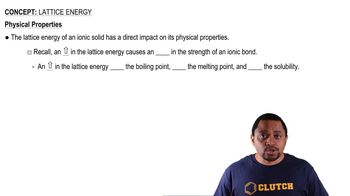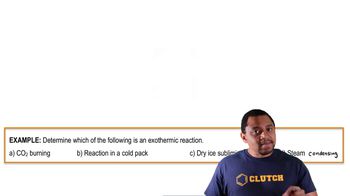Which ionic compound is expected to form from combining the following pairs of elements? (a) calcium and nitrogen (b) cesium and bromine (c) strontium and sulfur
(a) Is lattice energy usually endothermic or exothermic?
 Verified step by step guidance
Verified step by step guidance
Verified video answer for a similar problem:
Key Concepts
Lattice Energy

Exothermic vs. Endothermic Processes

Formation of Ionic Compounds

Which ionic compound is expected to form from combining the following pairs of elements? (d) aluminum and selenium.
Write the electron configuration for each of the following ions, and determine which ones possess noble-gas configurations: (a) Be2+, (b) Mn2+, (c) Cd2+, (d) Fe3+, (e) Tl+, (f) At-.
(b) Write the chemical equation that represents the process of lattice energy for the case of NaCl.
(c) Would you expect salts like NaCl, which have singly charged ions, to have larger or smaller lattice energies compared to salts like CaO which are composed of doubly-charged ions?
NaCl and KF have the same crystal structure. The only difference between the two is the distance that separates cations and anions. (a) The lattice energies of NaCl and KF are given in Table 8.1. Based on the lattice energies, would you expect the Na─Cl or the K─F distance to be longer?
